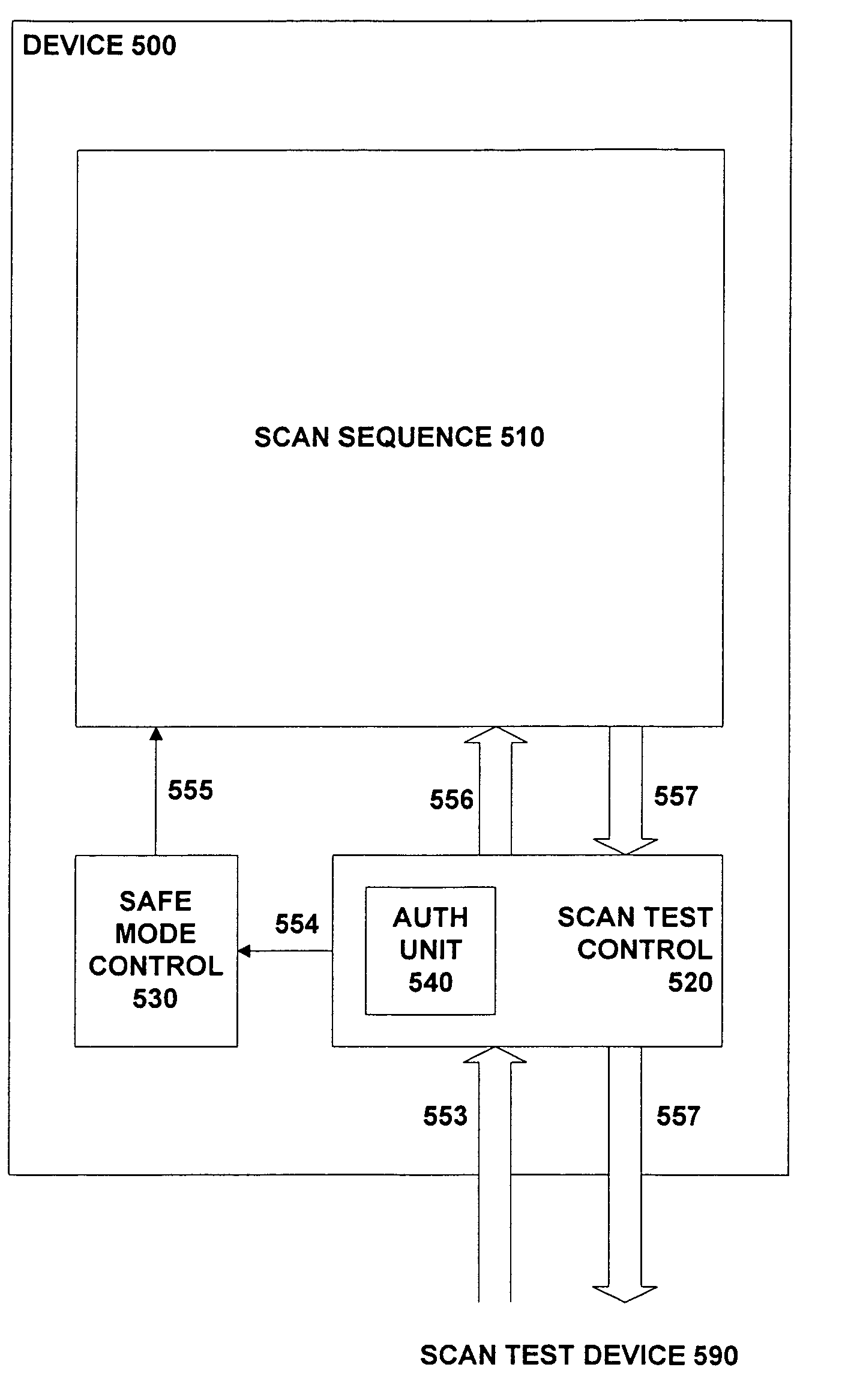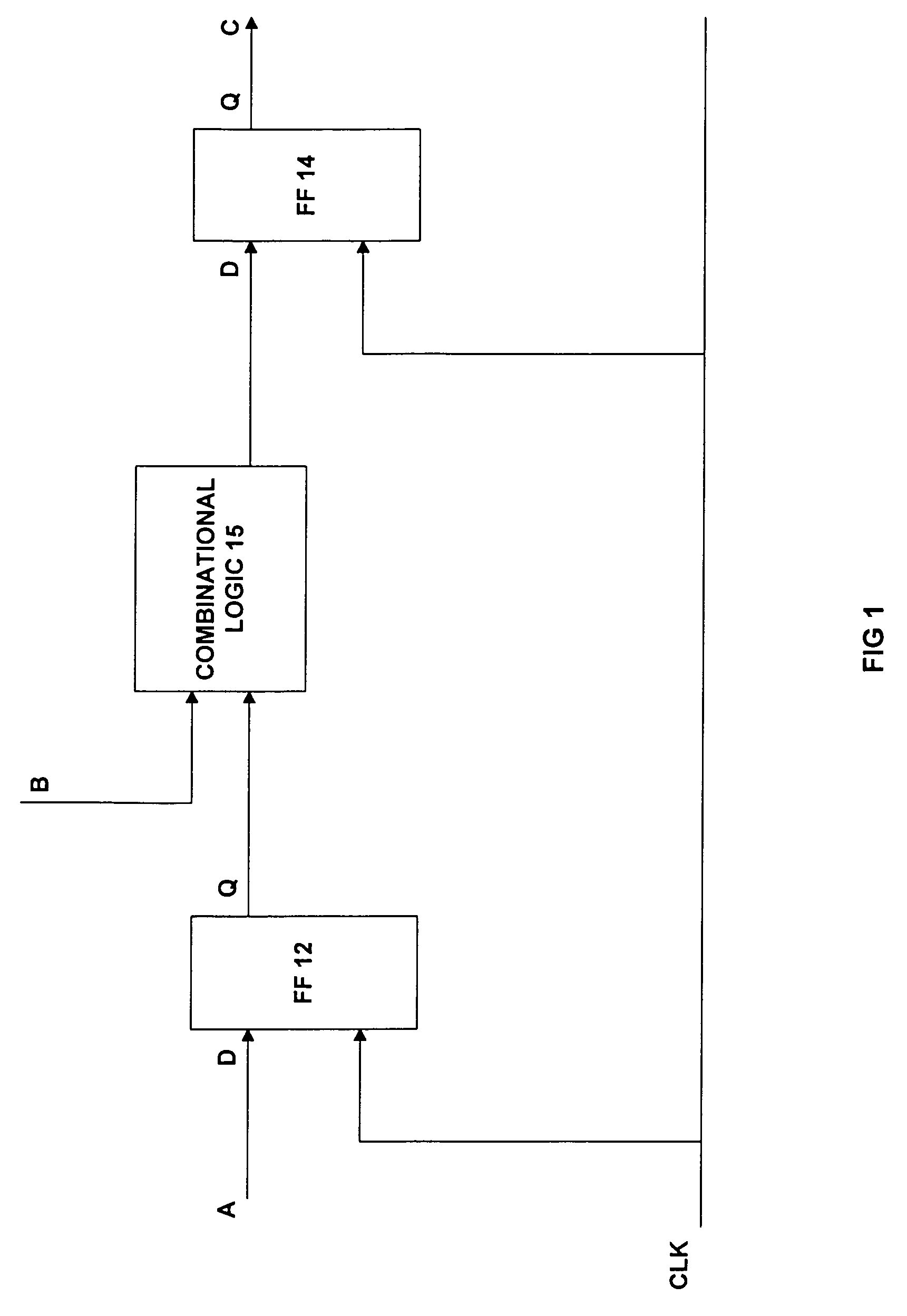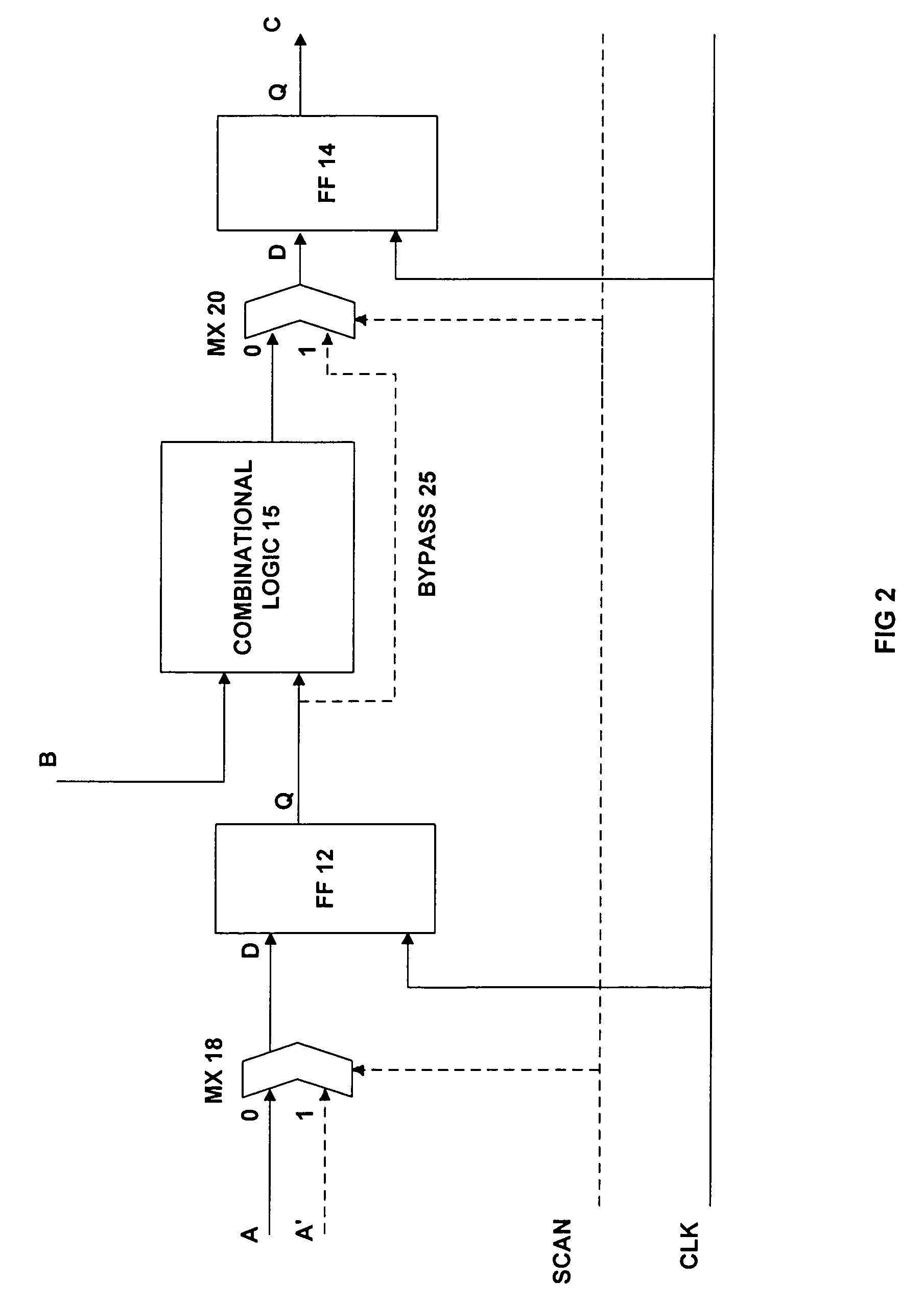Semiconductor device and method and apparatus for testing such a device
a technology of mikro-conductor and scan vector, which is applied in the direction of error prevention, digital transmission, instruments, etc., can solve the problems of accidental or malicious use of incorrect scan vector, incorrect input scan vector has somehow become corrupted, etc., and achieves a high degree of reassurance and further enhanced security
- Summary
- Abstract
- Description
- Claims
- Application Information
AI Technical Summary
Benefits of technology
Problems solved by technology
Method used
Image
Examples
Embodiment Construction
[0068]FIG. 5 depicts a semiconductor device 500 that supports scan testing in accordance with one embodiment of the invention. Thus device 500 includes a scan test control unit 520, which interacts with an external scan test device 590. This interaction is typically performed via appropriate input / output pins on device 500, such as by using a JTAG connection (as described in more detail below, with reference to FIG. 14).
[0069]Semiconductor device 500 also includes a scan sequence 510. This represents the set of functional components on the device that are joined together to form the sequence of flip-flops and so on that are to be tested in scan mode. Thus to perform such testing, the scan test control unit 520 receives an input scan vector 553 from external scan test device 590, along with appropriate control commands. This input scan vector is then forwarded to the scan sequence 510, as indicated by arrow 556. One or more processing steps are then performed within the scan sequence...
PUM
 Login to View More
Login to View More Abstract
Description
Claims
Application Information
 Login to View More
Login to View More - R&D
- Intellectual Property
- Life Sciences
- Materials
- Tech Scout
- Unparalleled Data Quality
- Higher Quality Content
- 60% Fewer Hallucinations
Browse by: Latest US Patents, China's latest patents, Technical Efficacy Thesaurus, Application Domain, Technology Topic, Popular Technical Reports.
© 2025 PatSnap. All rights reserved.Legal|Privacy policy|Modern Slavery Act Transparency Statement|Sitemap|About US| Contact US: help@patsnap.com



